Timothy’s Ghost
For weeks I’ve been haunted by this photo coloured by John Breslin @irelandincolour, taken in 1854 in Tipperary. I was haunted because it spoke to me in the voice of my Great Great Grandfather’s voice, saying “This was not me. But, look — look — this was me.”
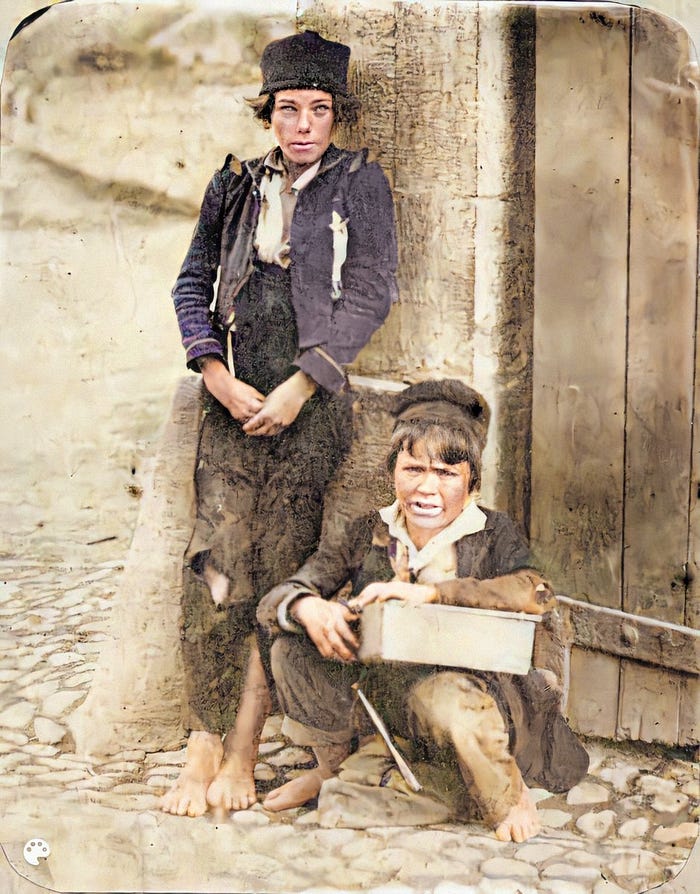
Timothy Callaghan emigrated in 1851 from the southern port town of Cobh, then known as Queenstown. He was 14 and alone. I doubt it was an easy choice, but probably one of few choices he had at the time. He was a ripple in a flood leaving Ireland, but he was one of the lucky ones in that his parents or his older sister in Boston were somehow able to pay for passage.
The Cobh Harbour is quite different now than what it would have been in 1851. Quiet enough today, Timothy would have looked across a harbour like a small forest of ships masts as he boarded his vessel, The Ship Racer, and embarked on his voyage into the unknown.
He would have passed prison hulks moored beside Spike Island, the largest prison in the history of the UK and Ireland, and at that time the largest prison in the world. The prison hulks were dark, damp and verminous. They were unseaworthy, sedentary; the complete opposite of their original purpose. Here were vessels designed for freedom of movement consigned to incarceration. Spike Island, a star shaped fortress turned prison, was full of men and boys waiting for transportation to penal colonies across the empire.
Many of the crimes were borne out of desperation owing to the breakdown in society and in some cases, crimes were even committed purposefully to get transportation, such was the horror of the Famine. A horror still evident in those faces of those boys in the photograph.
The passage would not have been easy. These ships were named “Coffin Ships” for a reason, both for the overcrowded conditions as well as the disease and death that filled them. He was a 14 year old on his own. I can’t imagine the fear and doubt in his mind during that passage.
He landed in New York City & spent his first winter in Vermont, working as a logger. In the spring the stumps of the logged trees were still nearly 5' tall for the snow that was there when they were cut. So he headed south for a warmer climate, eventually arriving in Louisville, Kentucky.
He may have worked for a dairy when he arrived, but we know that he eventually got a job on the L&N railroad, then just in its infancy. In May 1853 Timothy was on the very first crew to lay rail on that new venture, an 8 mile stretch out from the center of Louisville. Young Timothy must have felt an incredible excitement and charge at being a part of certain history, in a young and booming city. An excitement that would only last a few weeks.
On August 6, 1855 the Know Nothing’s, a right-wing nativist political party, instigated anti-immigrant and anti-Catholic riots in Louisville on Election Day. Stoked by incendiary articles in The Louisville Journal by editor George Prentice, Protestant rioters tore through the city, which had a large percentage of immigrant residents. The rioters attacked, killed, set fire to and hung Irish and German immigrants, causing immense destruction and death. Timothy was very nearly one of those numbers.
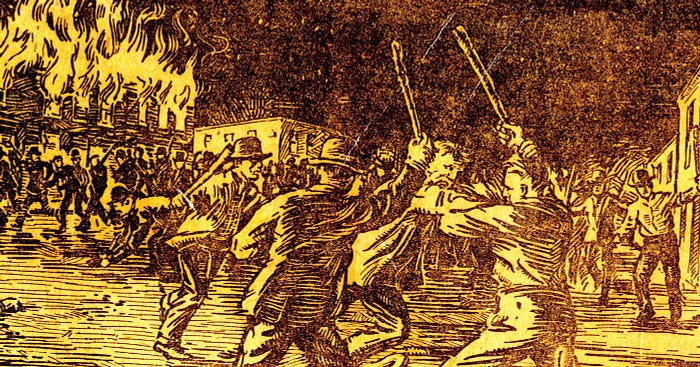
The cart he was driving was attacked and overturned, his horse killed. In order to avoid being attacked further, he hid beneath it and played dead. And because of this, I exist.
Officially 22 people were killed, although this has been much disputed. What isn’t disputed is the terror of that night or

the mass exodus of immigrants from the city afterwards. Timothy was a part of the immigrant exodus from Louisville, maybe fortuitously, because of his job with the L&N. He vowed to never step a foot in Louisville again, and we’re certain that he kept that promise.
The first L&N train ran on August 25, 1855, only weeks after Bloody Monday, when 300 people traveled 8 miles from Louisville to its outskirts. I wonder how many on board had a direct or indirect hand in previous chaos that engulfed their city.
lnrr.org/History.aspx
In 1859, the first train operated all the way from Louisville to Nashville, joining the two namesake cities. By this time, Timothy had settled in Colesburg, Kentucky, south of Louisville, where the L&N had a depot at the spur of Muldragh’s Hill.
He fell in love with Mary Malvina Booth, a woman from a prominent family. However, her father was vehemently against her marrying an Irish Catholic, and one 8 -10 years her senior. They ran away to Tennessee right before the start of the Civil War and eloped on December 26, 1860.
When the Civil War began, Timothy was assigned to guard the rail bridge over the Salt River in Kentucky. The bridge was burned first by Union forces to halt Confederate advances into the State and later by Confederate forces on John Hunt Morgan’s famous cavalry raid into Indiana.
He was then moved a bit further south to the bridge on the Rolling Fork River at Lebanon Junction. He was eventually able to buy a plot of land, where he settled down and became a farmer. We believe he raised chickens.
Timothy died in 1899, 6 months short of the new century. Born into a country on the verge of chaos, he made a life for himself on a new continent, elevating himself far above any station he likely would not have had at home. He was 65.

We don’t know what Timothy looked like, although we’ve heard he had dark hair and blue eyes, like my dad. We have a photo of his son, my great grandfather, John Sr. This portrait was made sometime in the late 1800’s when he was an Assistant Railroad Engineer for the L&N.
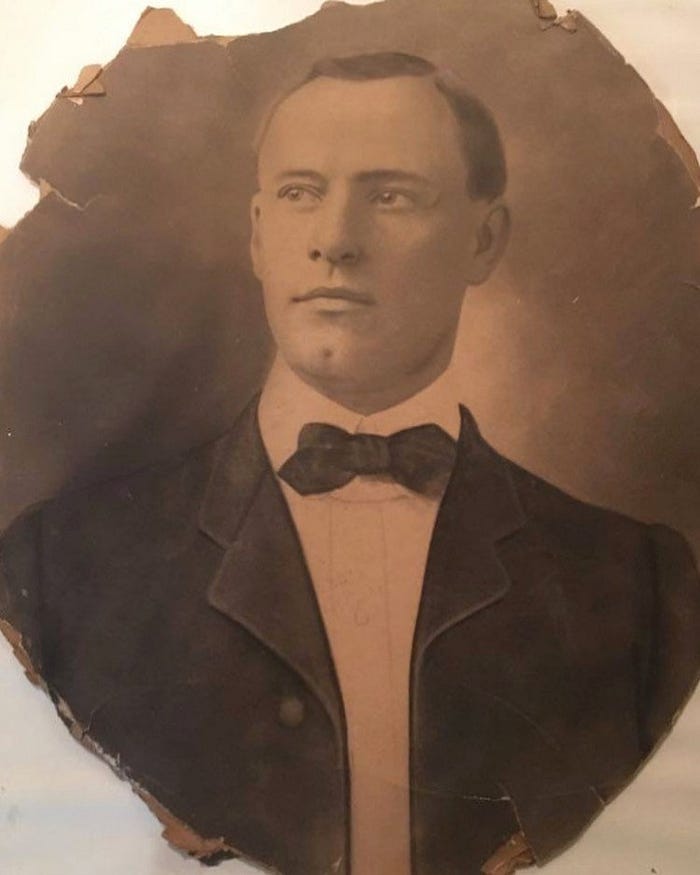
Two of Timothy’s sons worked on the railroad, John Sr. and Herman. Herman was a railroad fireman who died on the railroad. He was putting water in a boiler on another engine when the big water spout fell down and severed his legs from his body.
John Sr. had just passed him, working on another train. They waved to each other as he passed. When he got to the next stop he was told that Herman had been hurt, and to hurry back but he didn’t make it in time.
Herman was 21.
He was buried and a fine headstone erected, in the same stone as his parents headstone. John Sr. also paid for a stained glass window in St. Clare’s Church, one of the first Catholic churches west of the Appalachians and founded by Bishop Flaget.
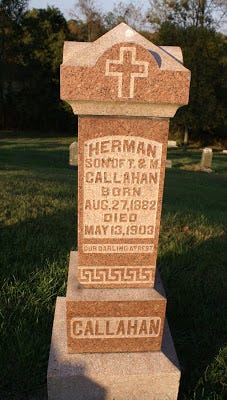
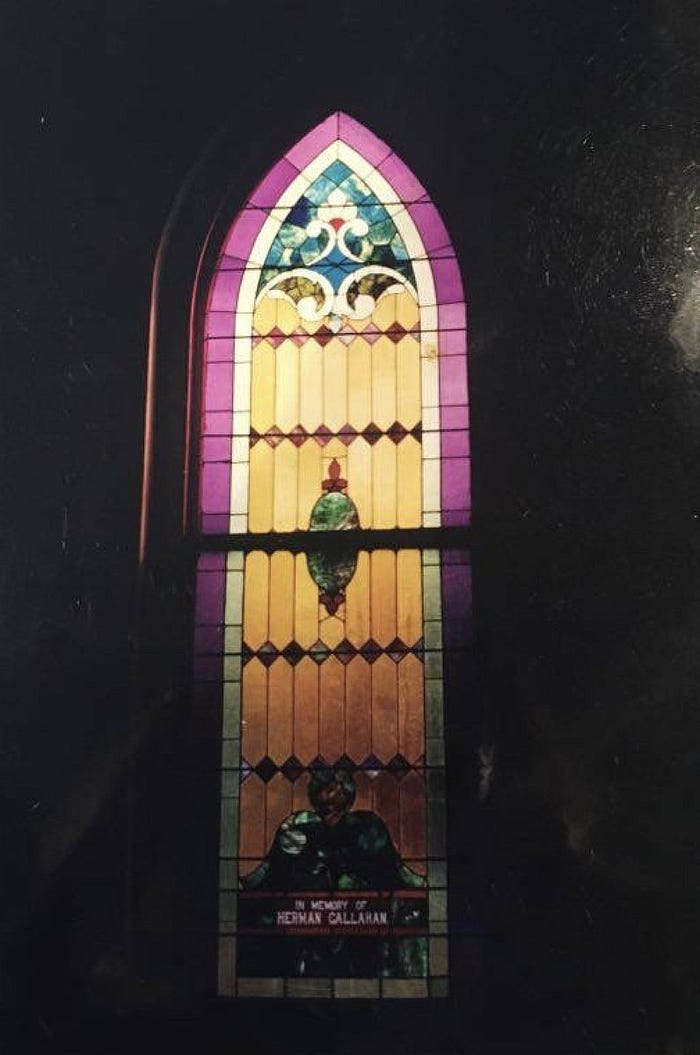
In 1905 there was a tremendous accident at New Hope, Kentucky when two trains collided. One of the trains was carrying explosive ordinance for mining, which the subsequent fire ignited. At the time, that section of the L&N had three Division Engineers and two were killed that day.

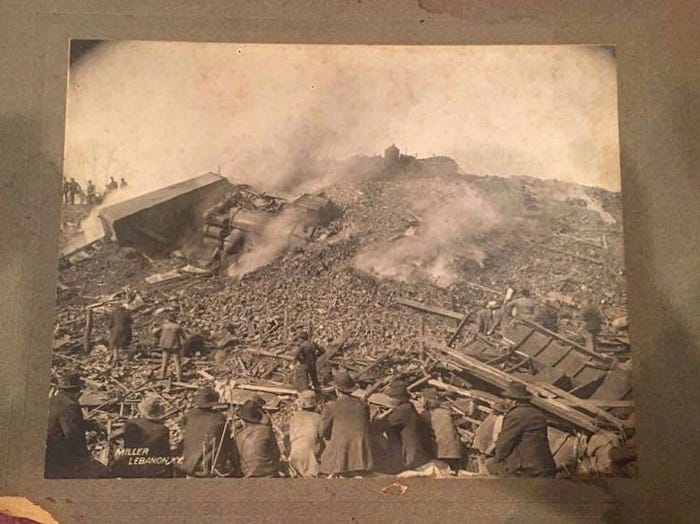
John Sr. was immediately made an Engineer, after which he successfully passed his Engineers test. During WW1, he made some history. The spur of Muldragh’s Hill was the steepest rail grade east of the Mississippi. Trains were broken up and taken up in sections.

It’s why Colesburg existed. This would often take a day or more to complete. Driving a freight train with a consignment of hemp for the war effort, John Sr. eschewed practice and took his train up in one heroic and dangerous slog, the first ever to accomplish that feat.
Bringing in his train of materials vital to the war effort over a day early, he received a commendation letter from President Woodrow Wilson himself. He drove steam engines for the rest of his career, his last run with Engine 1894 in January 1945. He finally retired in 1947.
My dad spent his whole life trying to figure out where Timothy was born. Trained as an archaeologist and anthropologist, he’s a keen researcher and did amazing work reaching back on his mother’s side. But at Timothy, whom he wanted most to discover, there was a wall of silence.
All we had were family myths and legends, handed down stories that were genealogical shrugs, such as the racehorse Donerail. John Sr. never gambled, but in 1913 a horse called Donerail was entered into the Kentucky Derby.
Seeing the name of a place his father surely talked about, John Sr. went to the Derby that first Saturday in May and placed a bet. In a field of 8, Donerail went off at 91–1 odds and won, still the biggest longshot to ever win the Derby.
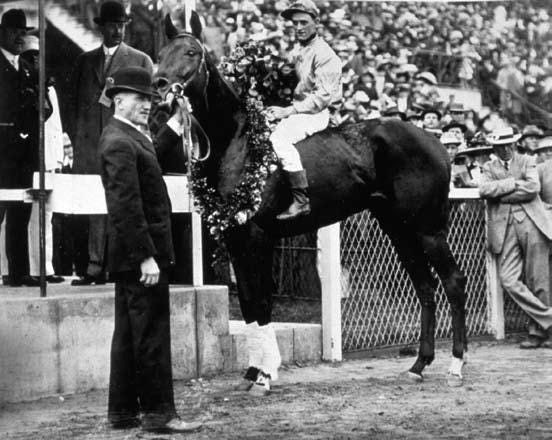
I can’t even imagine how much John Sr. won that day and we’ll never know, because he was pick-pocketed outside the gates of Churchill Downs. It’s a story that always hinted at a connection, a tangible place on a map.
But the only connection was Cork. After many years, my dad and my Uncle finally hit on some new information. We had baptism information for Timothy and his older sister, Honora. It was information that would prove crucial.
In 2017, just as my parents were arriving in Ireland to meet their granddaughter for the first time, I discoveredwhere Timothy was born. His parents, John Callaghan and Mary Cremin, rented four fields and a cottage in Gouganes, Banteer, Co. Cork.
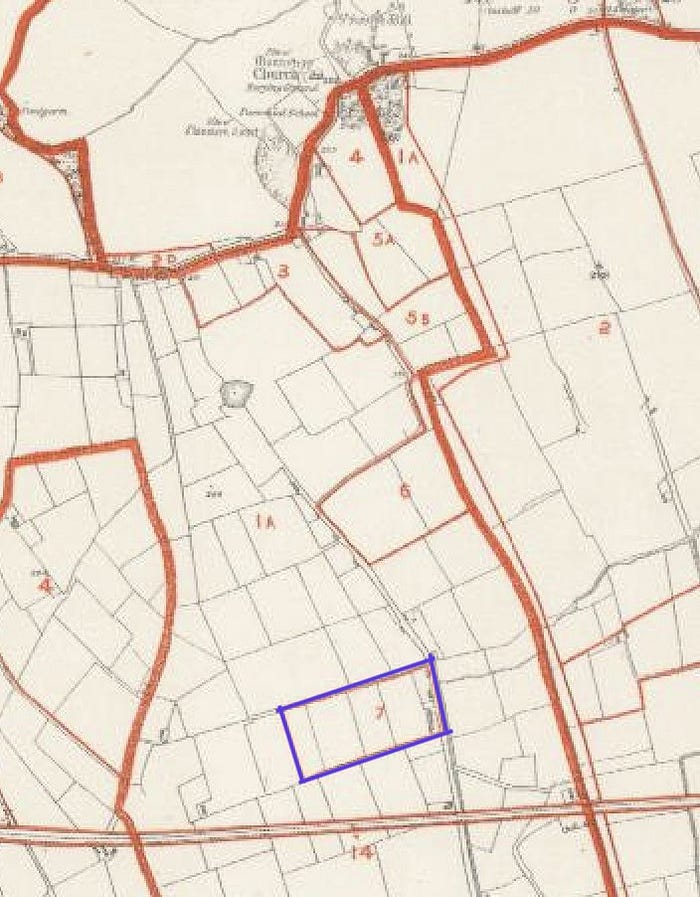
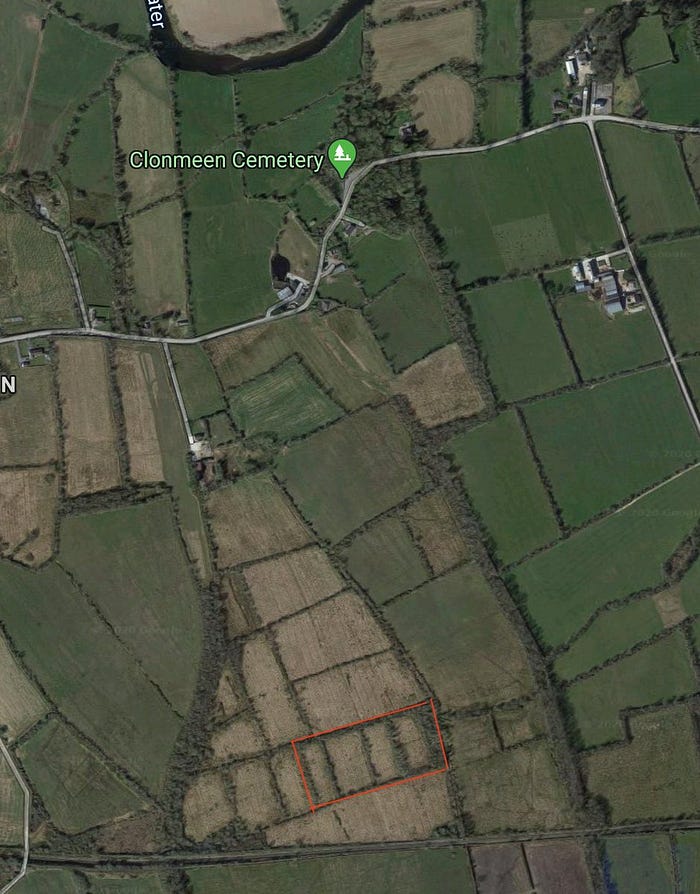
Maybe it was fitting that I was the one who found him. I was meant to be a different person, a person named Sean Christopher. But when I was born I ended up in a critical condition, and my dad panicked slightly when asked to name me in the tragic case that I died. So he named me Sean Timothy. I was the first Timothy in the family since that boy baptised in 1837 in Gouganes.
And In 1999, 100 years after the death of Timothy Callahan, another Timothy Callahan immigrated back to Ireland, albeit a Sean Timothy. Maybe it’s pure coincidence, maybe it’s a hand of fate.
Whatever it was, to find the foundations of his house nearly all buried in scrub, to walk the boreen that he walked, to bring my dad down that furze necklaced path to see a landscape that Timothy would have recognised, the fields still the exact shape and dimensions, was a truly moving experience. I’m very lucky.

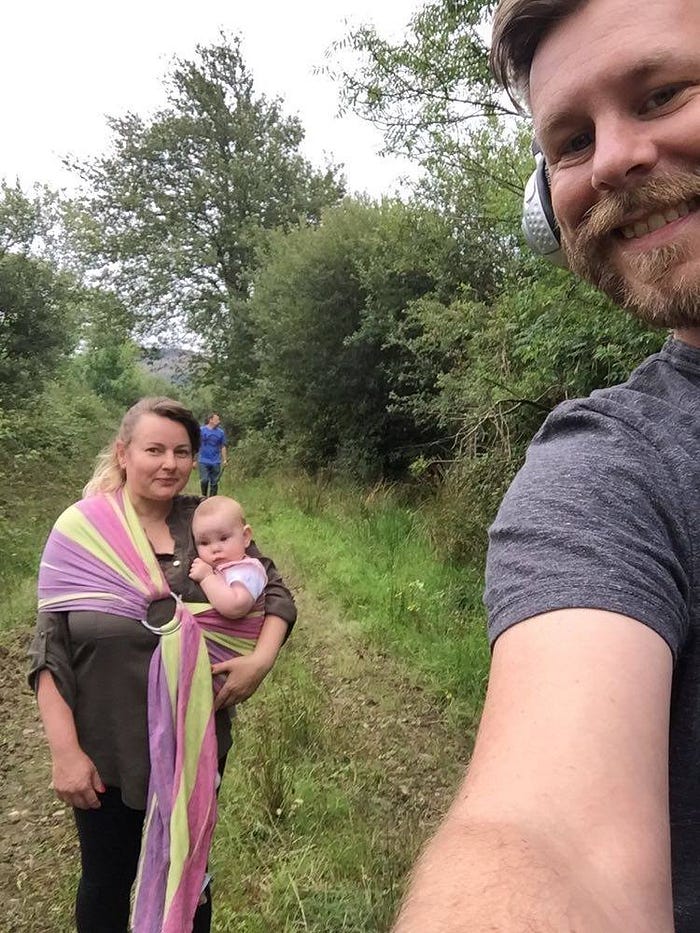
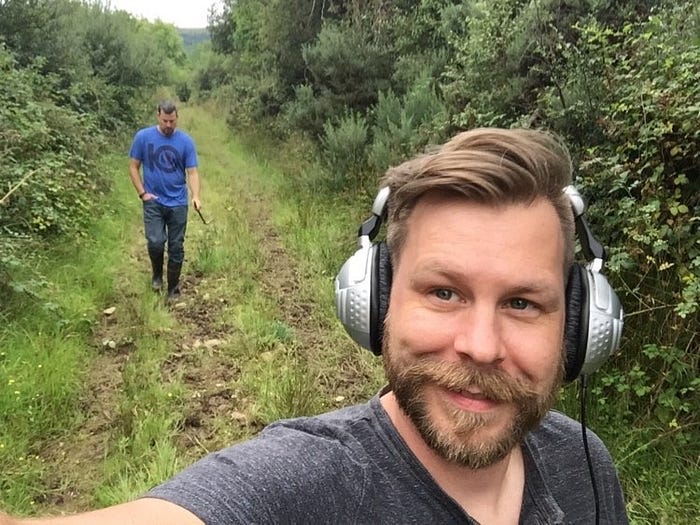
I still don’t have an image of Timothy, my namesake, my Great Great Grandfather. But with his story, of which we are actively searching for more details, and with the images of John Sr., my Grandfather John II, my dad, my uncles, my brother and with a photo of two boys of no relation but a similar start in life, I definitely have a deeper connection.
Thanks, @irelandincolour
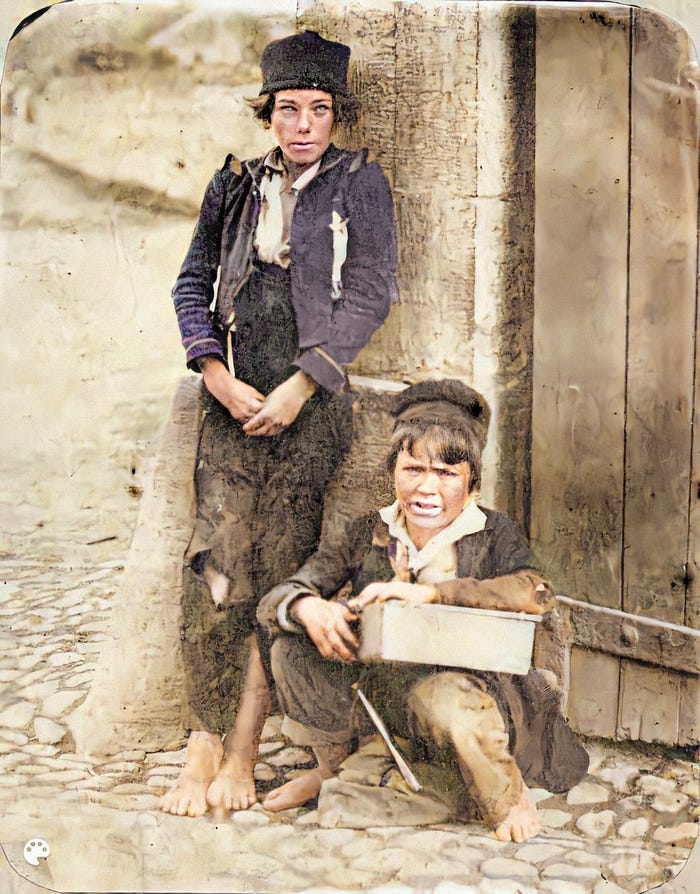
Update: @irelandincolour have been very kind to provide me with colourised versions of my family photos. The results are amazing to me and provide a puff of life into those who have gone before me.



